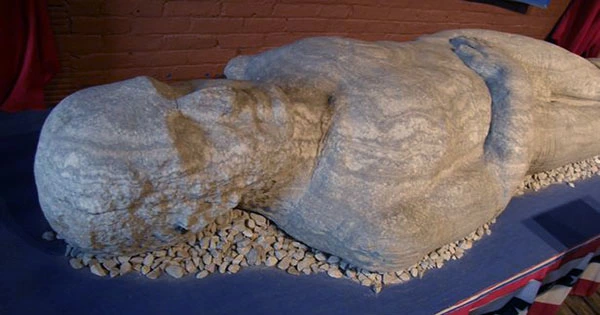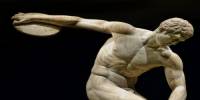Two workmen were digging a well in 1869 when they came across an interesting chunk of stone three feet beneath the surface. Gideon Emmons and Henry Nichols continued excavating until they came upon what seemed to be a massive human foot. One of them said, “I swear, some elderly Indian has been buried here!” They discovered what looked to be a petrified man, standing more than 3 meters (10 feet) tall, which helped to explain the gigantic clown foot.
They felt they had discovered an old giant, providing proof that the Bible was accurate. Naturally, the property owner began selling tickets. They charged 25 cents at first, but raised it to 50 cents when they were inundated with tourists. They’d have to contemplate a Groupon if things didn’t calm down quickly. The roads were clogged with buggies, carriages, and even omnibuses from the city, according to Andrew White, president of Cornell University. “And with passenger-laden timber carts from the fields.” Visitors saw the giant as confirmation that old text about giants was accurate, and that he may possibly be one of the renowned ones mentioned in the Bible.
To be fair to the observers, the “giant” seemed to be rather convincing, with pores all over its body. People were confronted with the prospect that giants existed, and they, too, felt self-conscious about their acne. The enormous, though, was clearly not genuine. In reality, the landowner’s cousin – a man who had gotten into such a heated fight with a preacher the previous year that he decided to go out and bury a gigantic stone man – had made the workmen appear ridiculous.
In 1868, cigar-maker George Hull was speaking with Rev. Mr. Turk, a methodist revivalist who took the Bible literally and believed in biblical giants. Later that night, the atheist decided to mock the viewpoint by fabricating a stone giant and passing it off as the actual thing, pushing the debate to new heights not seen since the invention of Twitter. He placed an order for a big gypsum block from an Iowa quarry, claiming it was for a Lincoln monument statue. He then commissioned a statue to be made, even going so far as to have pores pounded into the statue with knitting needles and acids used to make it seem worn.
The prank had cost him $3,000, but when a group of businessmen paid $30,000 for a share in the man-shaped lump of rock, he more than made up for it. This was probably considered a bonus by atheist Hull, who was primarily driven by the desire to make fanatical Christians remark something like “I declare, look at this very real huge lad!” or anything along those lines. Despite the vast sums of money raised, the prank backfired in its goal of making people understand how ridiculous the concept of giant humans was. PT Barnum constructed a duplicate of the giant and paraded it as if it were real.
When the proprietors of the original false giant tried to prohibit Barnum from showing it, the court told them to “bring your giant here, and if he swears to his own validity as a bona fide petrifaction, you shall have the injunction you seek,” which was fair enough. The false was eventually reproduced several times, convincing an increasing number of people that enormous beings were real. The hoaxes attracted a large crowd. Next time you come across what looks to be a massive human, consider whether it may simply be a rock.
















